Our founder Alex Pirouz has a friend who’s a big influencer on Instagram. He’s got thousands of followers and gets a tonne of traction on his posts.
They often catch up for lunch to chat business. Although his niche is in health and fitness, our founder always find it interesting to see the differences in marketing techniques on other social media platforms.
Even though Alex is a LinkedIn man, he holds nothing against him 😉. So they got talking about some of the strategies he has done to increase his engagement and follower base lately.
One of the strategies that really stood out was what he called an ‘Instagram Engagement POD’. Basically the way this works is that there are a number of people in a group (with a decent following) who like, comment and share each others posts. This gets him more reach to his followers, increases his views across his followers networks and therefore expands his Instagram network with hundreds of new people engaging with him daily.
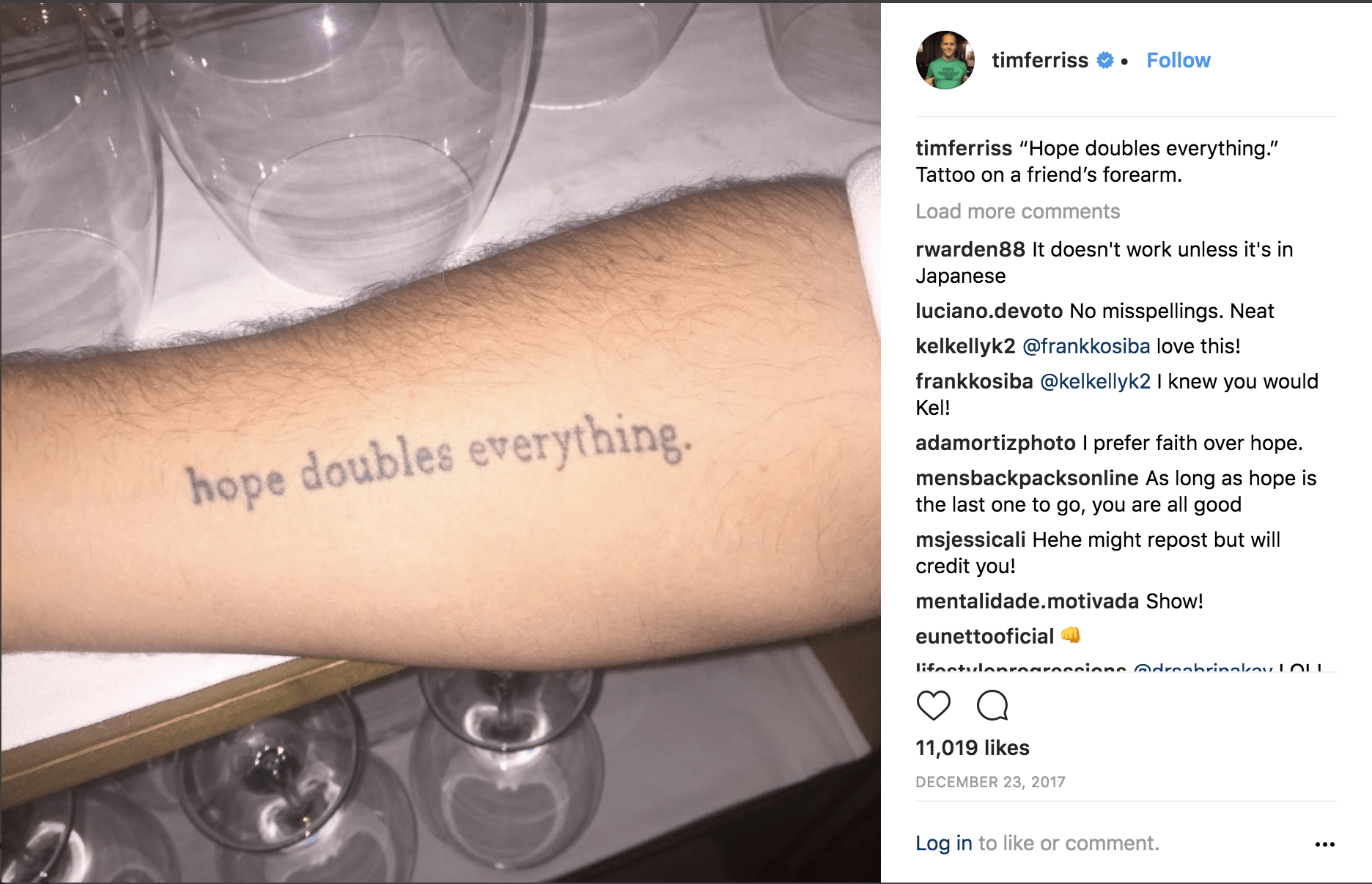
An interesting strategy Alex thought…. But he wasn’t convinced this would work for LinkedIn.
So that afternoon when he got back to the office he reached out to a few people in his network who had a big following and organised a LinkedIn engagement POD. He wanted to see if we could emulate the success his friend was having on Instagram on LinkedIn.
After a few weeks of testing and a lot of posts our founder started seeing a dramatic increase in his reach and engagement. Pretty much every post he put up was averaging around 30,000 views and reaching almost all his followers. Not to mention the increase in followers, increase in leads as well as the partnership and media opportunities that were presented.
In only a few months his posts had reached over 6.5 million views, all of which were attributed to this new found technique. As usual when we learn something that’s worked for us we love to share that research and those finding with our fans so you too can increase your reach and following on LinkedIn.
Therefore in this article I’m going to share with you what exactly a LinkedIn engagement POD is, why they’re important and the steps you need to take to set up your very own. With that said, let’s get straight into it.
At a very basic level a POD is essentially a group of LinkedIn users, who all agree to engage with one another’s posts. Every time you post on LinkedIn, you simply share a link to your post within the group and ask members to like, comment and share it as quickly as possible. We suggest doing it in the Messenger function of LinkedIn as shown below – don’t worry too much about this for now as we’re going to dive deep into how to set this up later in the article.
When you post a status update on LinkedIn it goes through four stages of processing, the level of engagement you get within these stages will determine your overall reach. First and foremost LinkedIn will sort through the text, image, and or video you’ve shared in your post.
It then categorises the post into one of three buckets: SPAM, LOW QUALITY or CLEAR. The aim in stage one is to reach the ‘Clear’ category. Once your post is cleared, LinkedIn will then send it to a small, random segment of your connections and followers to predict how well it will score.
This is why it’s important that you have a network of targeted contacts, otherwise your content will be untargeted and irrelevant to that audience, which will ultimately affect your score. Based on the number of likes, comments and shares you receive on your post within the first hour, LinkedIn will then determine the popularity of your post.
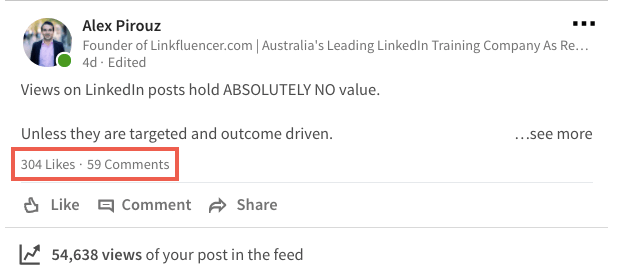
A like is worth one point, comments are worth two points, and a share is worth three points. The lower your total score, the less reach and vice versa.
If your post continues to get likes, comments and or shares post stage 3, it will be sent to LinkedIn headquarters for review. The editors will then surface your post in second and third-degree feeds, at which point you’ll be officially “trending”.
Some important things to note about these stages is that LinkedIn is trying to get people to stay within their newsfeed so putting up posts with external links will hurt your chances of your posts getting reach. To learn how to write engaging and valuable posts, check out this article we’ve written.
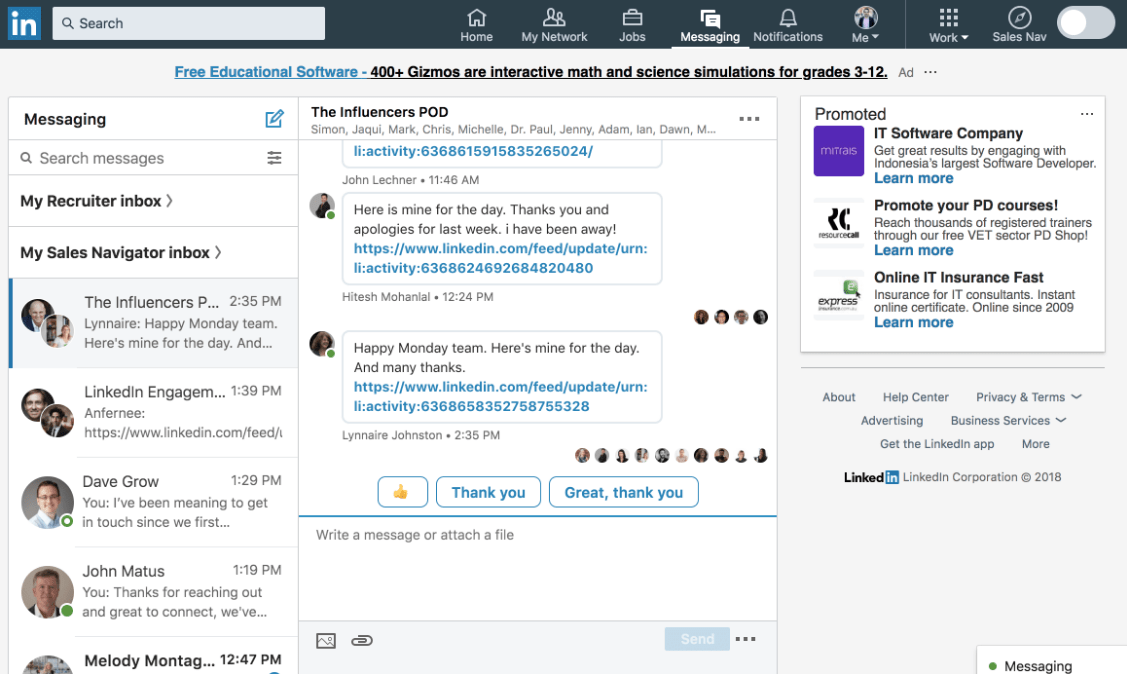
Getting a POD going is relatively easy, basically you set up a group conversation directly through LinkedIn using the messenger function as mentioned earlier. Then you start inviting people to that group through LinkedIn, baring in mind you will need to be connected with them to do so.
Generally speaking you don’t want more than 40 people in the POD at any one time as the number of posts shared within the group on a daily basis will start to get out of control. When inviting people to the group, keep in mind that the more followers those members have the greater reach you and all the others will achieve within the group. Now that you know what a POD is and the role it plays in helping you get more reach on LinkedIn, let’s look at the processing of how to set one up from scratch.
Step 1: Start a group conversation on LinkedIn through the messenger function. To do that follow the screenshots below.

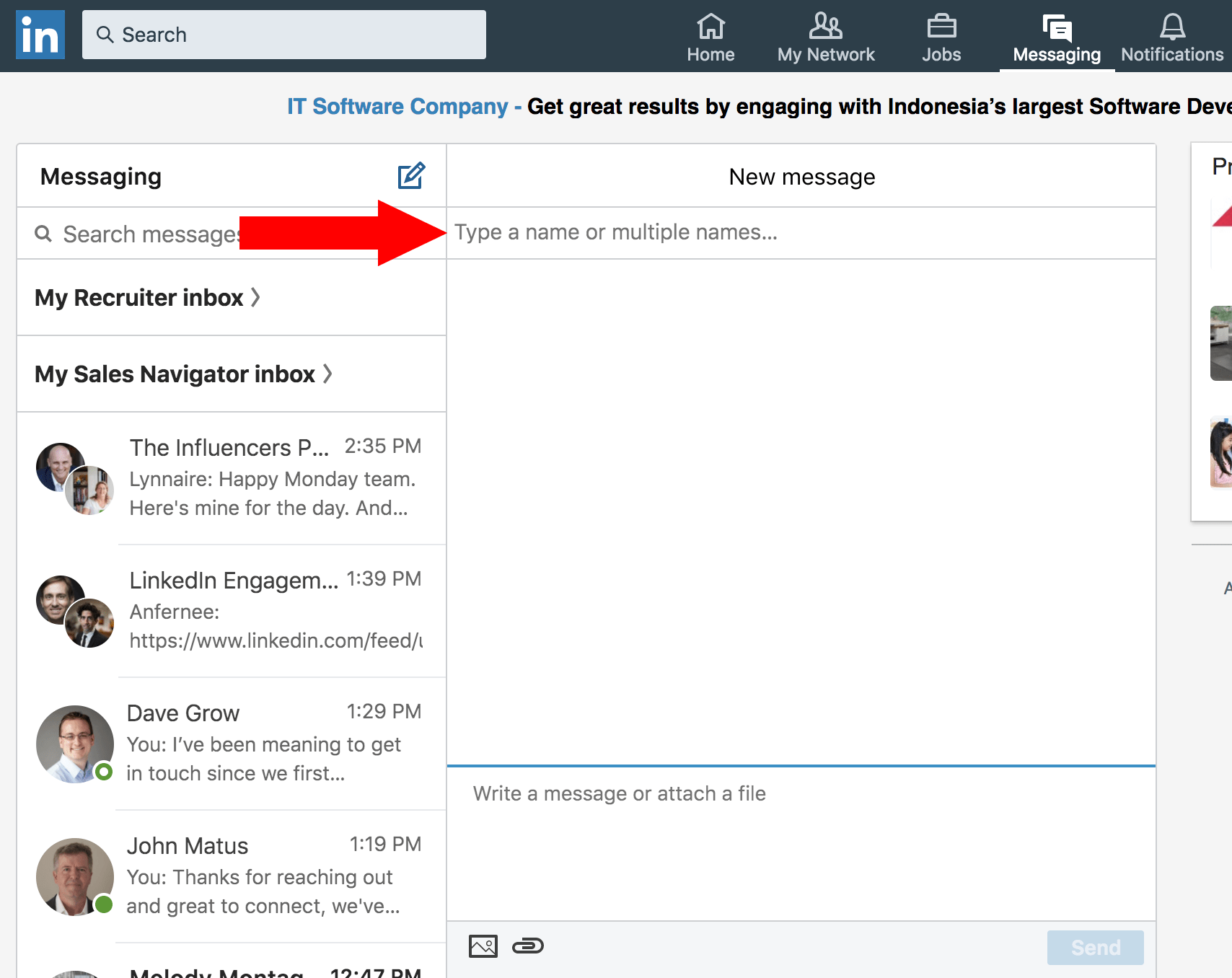
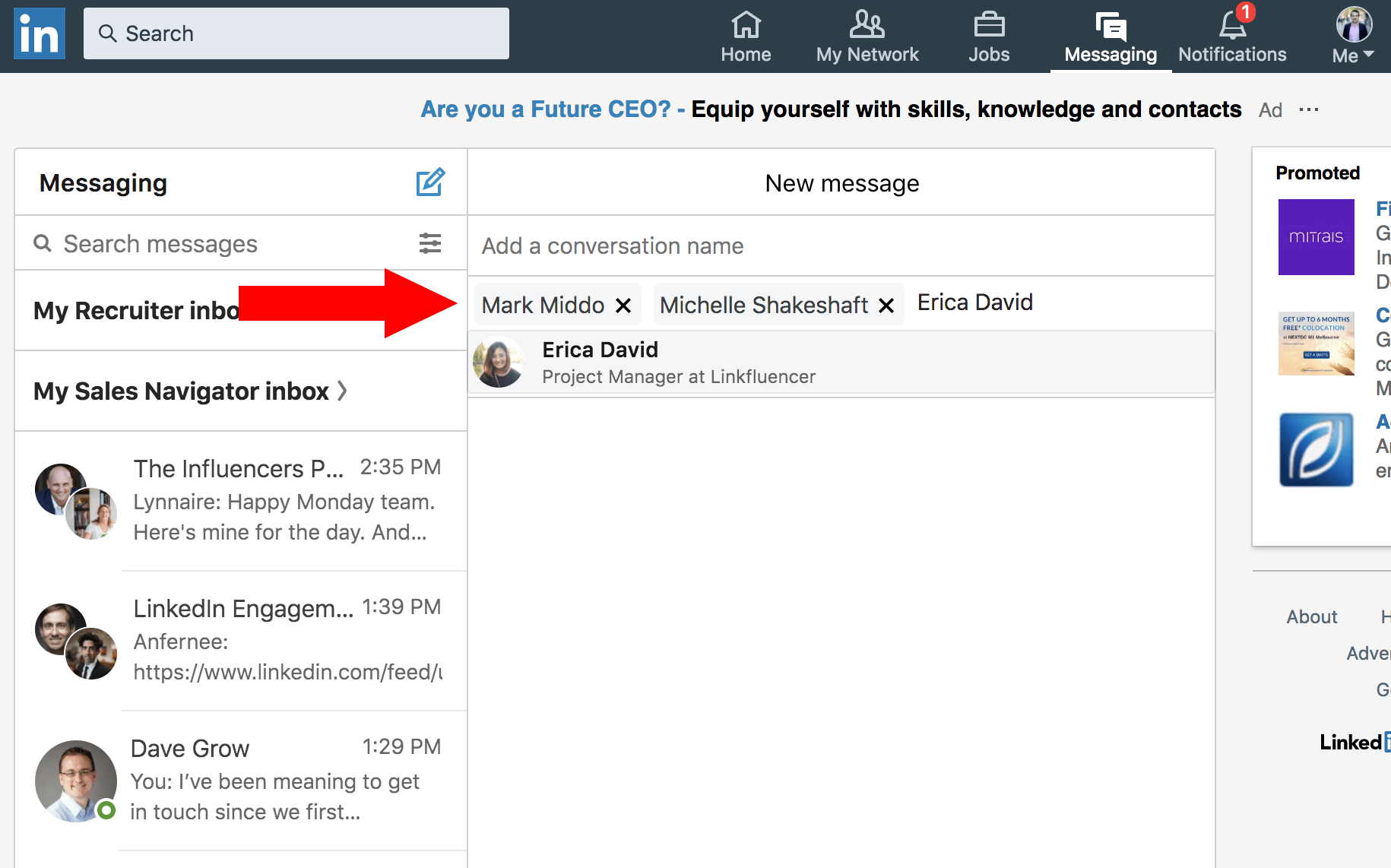
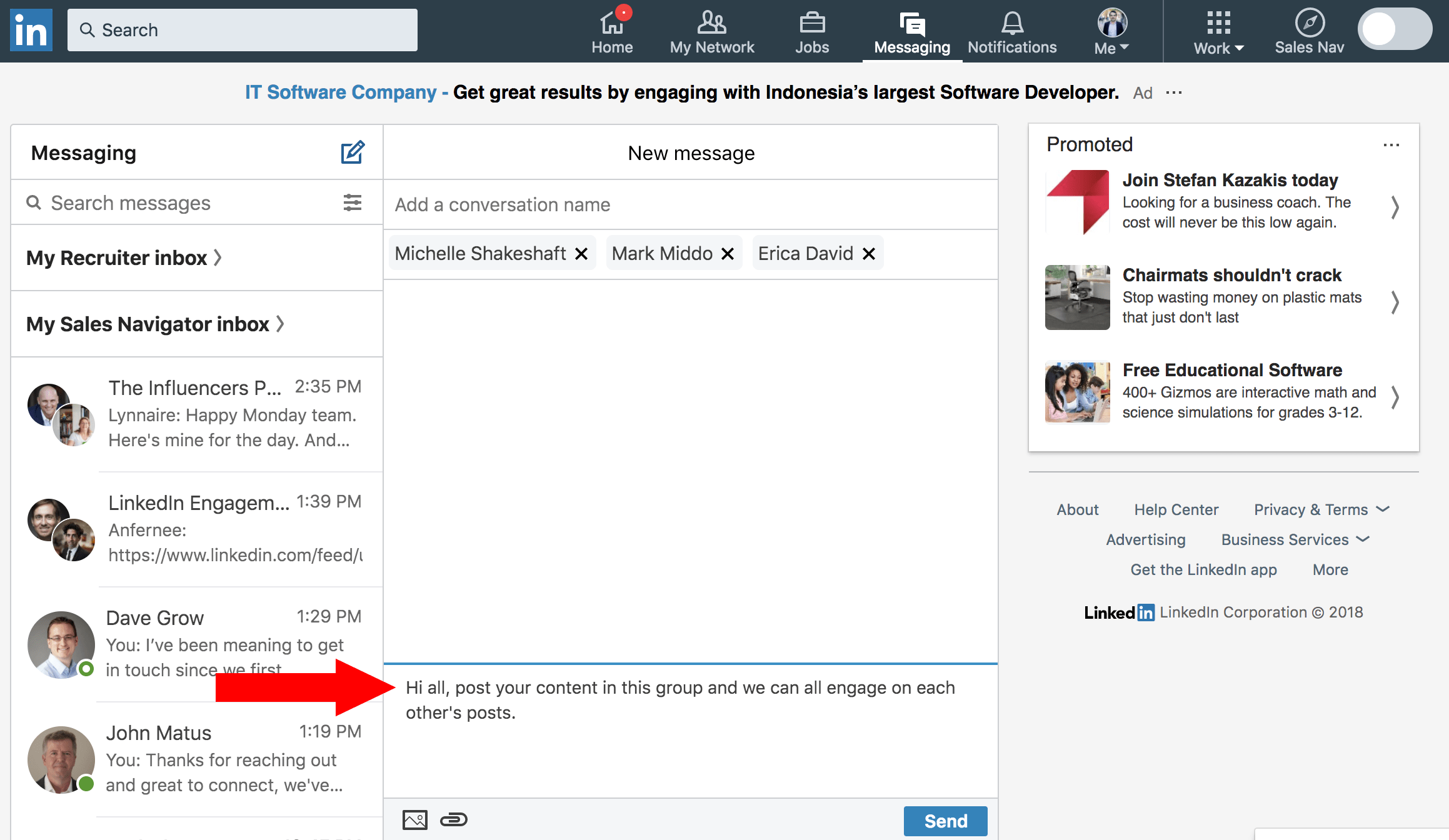
Step 2: Put together a list of 40 people in your network who you would like to invite to the POD.
Step 3: Now that you have this list send an email to each person explaining the purpose of the POD, the rules, date of launch and what they need to do in order to join.
Step 4: Once you’ve launched your POD you need to monitor it daily for engagement, quality and speed.
Step 5: Post up content on a daily/weekly basis and encourage other members to do the same.
Now it’s important to note that the key to a successful POD is making sure that the content you all share inside the group is as engaging, targeted and valuable as possible. Otherwise you won’t get much traction over and beyond the likes and comments of the members within the POD. So be sure to check out the article we mentioned earlier.
As well as that another important factor in running a successful POD is the makeup of your members within the group. If you have people inside your POD that are not using LinkedIn actively and have a small follower base the only real benefit you will get is more likes and comments on your post. And potentially a little bit more reach from your network.
But on the other hand if those members have a few thousand followers and are actively building their networks, then you all have a better chance of getting a lot of reach on your posts. Now bare in mind that it’s not just about the number of followers those members have, it’s how engaged those followers are with their content.
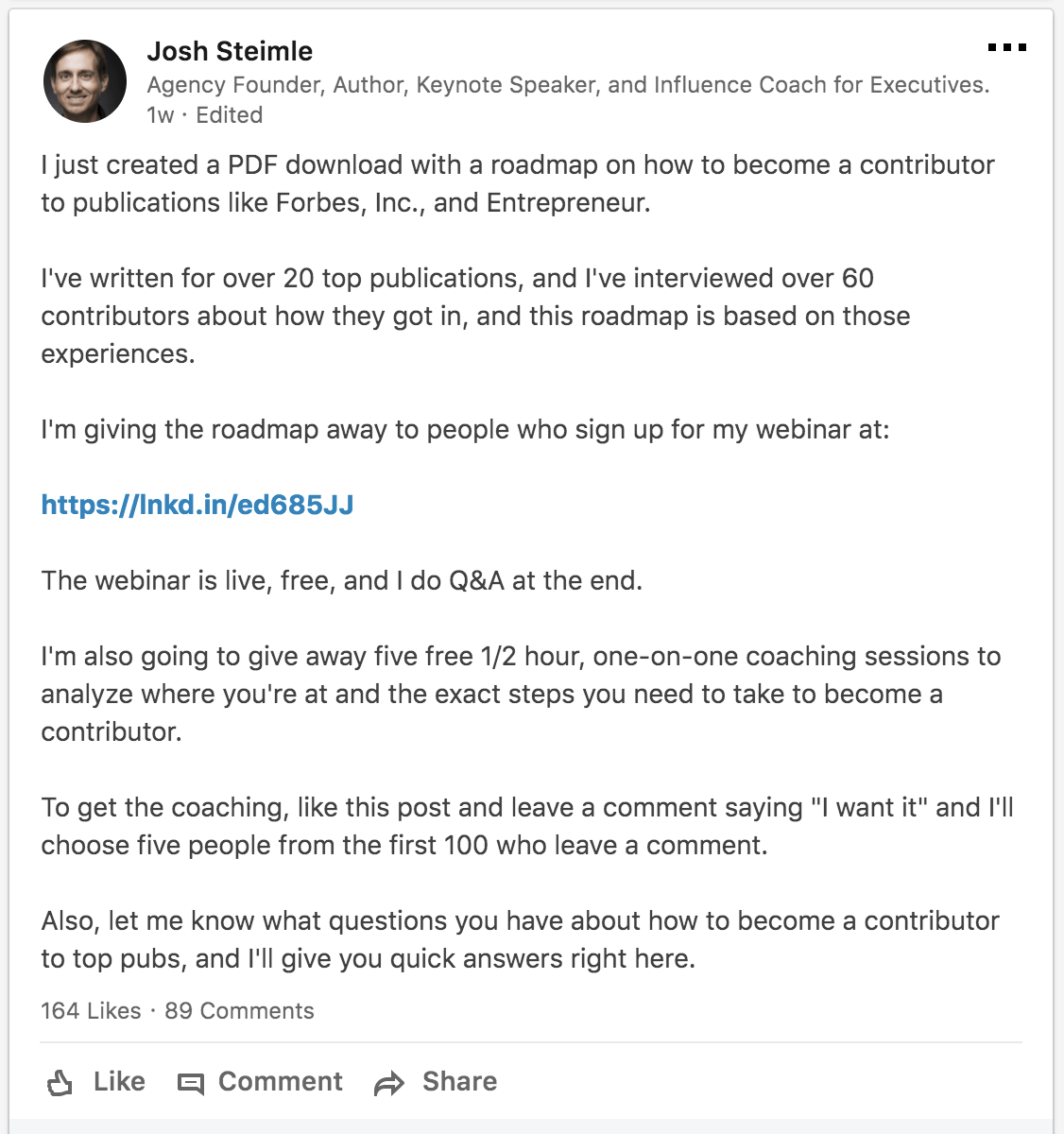
If someone has thousands of followers but are getting no engagement on their posts, it’s likely they’ve either purchased their followers or added random people to their network. This means that they don’t have a quality network, so as a result you won’t get as much engagement as compared to members who have an engaged network.
That’s why our clients are getting such good reach and results from the POD we set up for our campaign management clients. As they are all implementing our strategy and engaging with each other’s posts some of our members who were lucky to get a few hundred views are now getting thousands of views. And most importantly those views have resulted in leads, sales and partnership opportunities with one client securing over 4 new deals in a matter of a few posts.


We're celebrating the launch of Jayla by giving our first 500 customers access to our VIC club. As a 'Very Important Customer' you won't just feel special, you'll get notified of the release first and have the price of your subscription fixed for life.
On top of all that you'll get priority support and an invite to an exclusive live masterclass with our founder Alex Pirouz. This is strictly limited to only 500 VIC's available.
We’re celebrating the launch of Jayla by giving our first 500 customers access to our VIC club. As a ‘Very Important Customer’ you get access to Jayla weeks before the public, price of your subscription fixed for life, priority support and an exclusive live masterclass.
Fill out your name and email to be in the know.